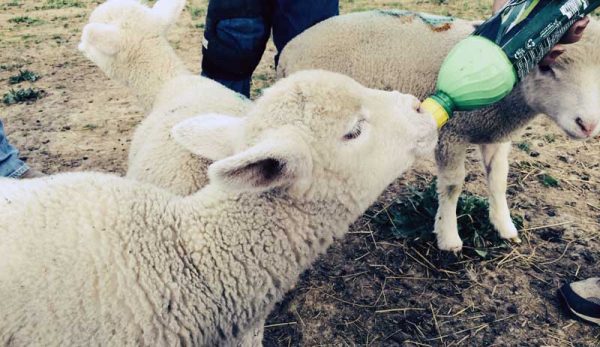
For some, lambing season is done or underway. Others (like me) will get into it later in the spring. If you raise sheep for any length of time, it’s probably inevitable that you will have an orphaned lamb if the mother dies or the lamb is rejected by the ewe after birth. In some cases, a ewe might have triplets or quadruplets and may not have enough milk for all of her lambs.
What I have learned after doing research and talking to some experienced sheep producers is that you don’t necessarily have to go straight to bottle feeding. Be aware, however, that this is where you may end up.
Colostrum: Baby’s First Meal
No matter what the reason, a newborn lamb’s first meal must be colostrum during their first 18 to 24 hours of life. In short, it is the key to the lamb’s survival.
Colostrum is the first form of milk produced by sheep (and many other mammals, including humans) that contains extra energy and nutrition for the lamb to maintain its body heat. According to Sheep 201, a lamb needs 10 percent of its body weight in colostrum during that key period.
In addition, the colostrum contains antibodies that help the newborn lamb resist disease for the first few weeks of its life.
You may be lucky enough to get some colostrum into your lamb from its mother before she leaves the picture. If not, you’ll need to get the colostrum in the lamb yourself. Some folks collect colostrum from another ewe that has given birth recently. I’ve read about using cow colostrum as well, but the research says you must feed more of it, as it does not have as much fat as sheep colostrum.
Another source is powdered colostrum that you can purchase from a local farm store or through several online sources.
To feed colostrum, you can start by trying to feed it from a bottle with an appropriate nipple. Many lambs do just fine that way. But some are so weak they are unable to even suckle on the nipple.
So in that case, you’ll need to tube feed the little lamb until he is strong enough to stand and suckle on his own. The Purdue University Extension has a really good video on tube-feeding lambs that I try to watch each year. I have not yet had to do this, but I have all the supplies and try to be prepared just in case!
Read more: Lambing in winter? Stay ready to treat hypothermia.
What If Things Go Wrong?
OK, if you are like me (and a whole lot of other people), you are going to be anxious to make sure your lamb and mother bond and nothing gets in the way of the pair (or more!) bonding into a nice family.
If your mother ewe has died, then you obviously will have to take action. If another ewe is lambing in the next six to 12 hours and she has a single, you can try dousing the orphan lamb with the amniotic fluid and placing him next to the new mother to see if she will adopt him.
But keep a sharp and constant eye on this situation, as some ewes will still reject the orphaned lamb and may even try to kill him! So pull up a camp chair or a bale of straw and settle in to see what happens. If the ewe does reject the orphan lamb, you will definitely have a bottle lamb on your hands.
In some cases, a ewe may seem to reject her lamb in the beginning. Some experts suggest putting a halter on her and tying her up so she cannot get away from the lamb. Another suggestion to “persuade” the ewe to accept an orphaned lamb is to put her in a headstall or stanchion that will keep her standing in place while the little guy tries to nurse.
First-time mothers or ewes that are in pain or had a difficult birth may be more likely to not be accepting right away.

Check the Ewe’s Teat
It’s always a good idea to check the ewe’s teat to ensure colostrum is coming out. Grasp the teat with your thumb and index finger near the top of the teat and pull down gently. If you see a milky substance, you will know the wax plug has come out and the lamb should (in theory) be able to nurse.
In yet other situations, your ewe may have had triplets (or more!) and simply won’t have enough milk for all of the lambs. If she doesn’t reject any of them, you can supplement milk for one or more of the lambs. A good lamb milk replacer mixed exactly as the directions specify is probably going to be just fine and will allow all the lambs to stay with their mother.
As to which lamb you should feed, I’ve read rationales for feeding the larger ones and letting the small one nurse, or the other way around. In my own personal experience, the larger, healthier lambs are more likely to want to nurse. Therefore I have ended up feeding the smaller one who isn’t getting to nurse as much.
The ins and outs of feeding a true bottle lamb comprise yet another complex issue I’ll talk about in the future. I’ve had to learn by making mistakes, but I always think it’s best to be prepared with information before lambing season starts … because you just don’t know what will happen.
I’m pretty sure the only thing I can be sure of is that I’ll be challenged with a new situation many times in the future!




